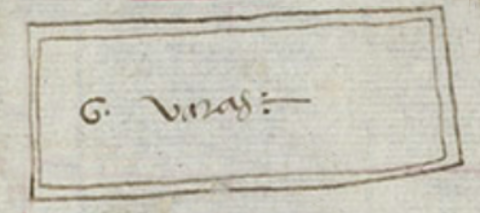mantel (CST29)
This painting of the simplex glyph for the term mantel (a Spanish loanword, meaning tablecloth) shows a large, white, rectangular cloth with a line just inside the perimeter that suggests a border. Written inside this rectangle is an annotation that says the cloth measures six varas (the Spanish rough equivalent of a yard). The companion text says that the six measures of cloth were needed for table coverings (manteles, in the plural) in the church. The value for the six varas was 8 pesos.
Stephanie Wood
Tablecloths, as such, show European influence, and the fact that they were needed at the church supports this. But large pieces of cloth were also known in pre-contact Nahua culture. See an example of the cuachtli and zotl glyphs from c. 1541 below. For more on the Codex Sierra, see Kevin Terraciano’s study (2021).
Stephanie Wood
1550–1564
Jeff Haskett-Wood
manteles, telas, varas, medidas, mesas, iglesia

mantel (a loanword from Spanish that entered Nahuatl), a tablecloth, https://nahuatl.wired-humanities.org/content/mantel
mantel
Stephanie Wood
Códice Sierra-Texupan, plate 29, page dated 1560. Origin: Santa Catalina Texupan, Mixteca Alta, State of Oaxaca. Kevin Terraciano has published an outstanding study of this manuscript (Codex Sierra, 2021), and in his book he refers to alphabetic and “pictorial” writing, not hieroglyphic writing. We are still counting some of the imagery from this source as hieroglyphic writing, but we are also including examples of “iconography” where the images verge on European style illustrations or scenes showing activities. We have this iconography category so that such images can be fruitfully compared with hieroglyphs. Hieroglyphic writing was evolving as a result of the influence of European illustrations, and even alphabetic writing impacted it.
https://bidilaf.buap.mx/objeto.xql?id=48281&busqueda=Texupan&action=search
The Biblioteca Digital Lafragua of the Biblioteca Histórica José María Lafragua in Puebla, Mexico, publishes this Códice Sierra-Texupan, 1550–1564 (62pp., 30.7 x 21.8 cm.), referring to it as being in the “Public Domain.” This image is published here under a Creative Commons license, asking that you cite the Biblioteca Digital Lafragua and this Visual Lexicon of Aztec Hieroglyphs.



